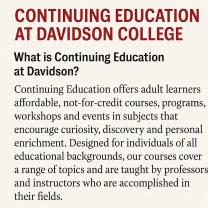How to arrange coffee breaks for the course?
Arranging coffee breaks for a course or training session is a thoughtful way to provide participants with a chance to refresh, socialize, and recharge during breaks. Here are steps to help you plan and arrange coffee breaks effectively:
Determine the Schedule:
- Review the course schedule to identify suitable times for coffee breaks. Common times are mid-morning and mid-afternoon, as well as a lunch break.
Budget Planning:
- Determine your budget for coffee breaks, as this will influence your choices regarding refreshments and service.
Select Refreshments:
- Choose the refreshments you want to offer during the breaks. Coffee and tea are standard options, but you can also provide water, juices, and a variety of snacks like pastries, cookies, and fruit.
- Consider dietary restrictions and preferences of participants, including options for those with allergies or dietary restrictions like gluten-free or vegan.
Beverage Service:
- Decide whether you will have coffee and tea available throughout the breaks or if you will serve them at specified times.
- Determine how you will serve beverages. Options include self-service stations, hired servers, or pre-poured cups.
- Provide cream, sugar, sweeteners, and a selection of teas if applicable.
Snack Service:
- If offering snacks, arrange for a selection of items that participants can easily grab during breaks.
- Ensure proper labeling of snacks for those with dietary restrictions or allergies.
- Consider providing healthy options in addition to indulgent treats.
Presentation and Setup:
- Arrange an area or room where participants can comfortably enjoy their coffee breaks. Ensure there are enough tables, chairs, and space for people to mingle.
- Set up a designated area for refreshments, with clear signage to guide participants.
- Make sure there are garbage and recycling bins nearby for disposal.
Service Providers:
- Determine whether you will hire a catering service, use an in-house provider, or delegate the responsibility to a team member.
- If using a catering service, communicate your requirements clearly, including the timing of service and any dietary considerations.
Timing and Duration:
- Stick to the planned schedule for coffee breaks to ensure they are consistent and predictable for participants.
- Aim for a duration of 15 to 30 minutes per break, depending on the course structure.
Allergen Awareness:
- If providing food items, clearly label items that contain common allergens (e.g., nuts, dairy) to accommodate participants with allergies.
Feedback and Adjustments:
- Gather feedback from participants regarding the quality and variety of refreshments and the overall coffee break experience.
- Use feedback to make improvements for future courses.
Safety Measures:
- Consider any safety measures necessary, such as providing hand sanitizer or adhering to food safety guidelines.
Environmental Considerations:
- Be mindful of environmental concerns. Use reusable cups and cutlery if possible, and provide recycling options.
Communication:
- Communicate the coffee break schedule and location to participants in advance, either through course materials, email, or signage.
Remember that the quality of coffee breaks can contribute to the overall experience of the course. Providing a welcoming and well-organized coffee break can help participants stay engaged and refreshed throughout the training.













